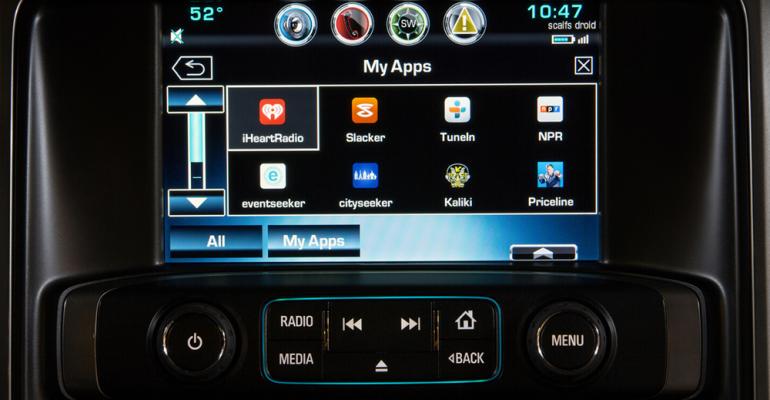In September 2013, automotive supplier Delphi opened a laboratory in Silicon Valley.
Its purpose, says lab director John Absmeier, is to support automakers with offices there and scout new technologies and talent. But it also is meant to prove the supplier is embracing the information-technology companies that quickly have become an integral part of the supplier pantheon.
“The automotive industry traditionally has not had a good relationship with tech companies,” says Absmeier. “Being next door to them gives us a lot more credibility and ability to collaborate.”
Not so long ago, such collaboration would have been unlikely. One company could single-handedly provide much of the infotainment technology that went into a car.
The connected car has changed that. Now, a vehicle must supply real-time information and services from external environments. That need has upended the traditional automotive supply chain.
“The idea a Tier 1 will serve it all up on a plate are gone,” says Thilo Koslowski, vice president-smart mobility at market researcher Gartner.
Now, big automotive suppliers such as Delphi are working with large and small firms to develop products. At the Consumer Electronics Show earlier this year, Delphi showed an infotainment system that used a smartphone as its engine, jointly developed with NVIDIA, a Santa Clara, CA-based company, and CloudCar, a small Silicon Valley IT firm.
Such relationships help the traditional suppliers hang on to some of the value chain in the increasingly cloud-based connected-car world.
“The suppliers can’t just be hardware producers,” says Koslowski. “You aren’t going to make any real value there.”
Automakers also are taking a more collaborative approach. To develop HondaLink, which allows drivers to access a broad range of applications on their smartphones through the car itself, Honda worked with giants IBM and Mitsubishi Electric, as well as small IT firms, says Charles Koch, manager of new business development at American Honda.
The smaller players “are very smart, very nimble and really good at connecting the dots, which is what you need,” says Koch. The large suppliers have the experience and the resources to develop hardware systems, but the move to digital and software-based systems is relatively new to them, he says.
“Not one of these companies expresses the expertise in all the skills and contents needed” to develop the connected-car systems, says Koch.
Need for Speed Key
One smaller player Honda works with is Abalta Technologies. Based in southern California, Abalta has 25 employees. Its Weblink software allows various smartphones to work as the primary computing device in a car.
In the past, Abalta would have worked with the Tier 1 suppliers on a system such as HondaLink, says Abalta CEO Michael O’Shea. Now it works with the automakers themselves.
The need for speed is the key, he says. Tier 1 suppliers are set up for years-long product-development cycles. At Abalta, development cycles are down to six or seven months and shrinking.
“When it comes down to the latest and greatest gee whiz, that is harder for (the Tier 1s) to pull off,” says O’Shea.
Even automakers that are keeping much connected-car development in-house are working with smaller IT companies.
General Motors was an early adopter of connected cars with OnStar, which gave distressed drivers in-car access to an operator for help.
Since then, the service has evolved. Some ’15-model Chevrolets will have 4G LTE connectivity through OnStar. Owners will be able to customize the apps that run in their car online with the Chevy AppShop.
Many of the applications were developed in-house at a lab in the basement of the RenCen, GM’s Detroit headquarters, says Steve Schwinke, director of app ecosystem development for the automaker.
“Most apps are built for your phone and are not meant to use when you drive,” says Schwinke, who worked for OnStar for 17 years. “The apps we create are meant to use while you are driving.”
In a bow to the need to collaborate, however, some AppShop offerings – such as Kalike, a spoken-word news-and-entertainment app – were developed by independent IT companies. GM brings developers from the small firms to its lab in Detroit to work on the projects.
But don’t count the traditional Tier 1 players out.
The traditional suppliers may struggle with the transition to what is basically a “service ecosystem,” says Mark Boyadjis, manager of Human Machine Interface and infotainment at consultancy IHS. But their experience with electronics integration remains vital.
“They have the competency to deal with what a car is, (which is) massively more complex than an iPad,” he says.
Tier 1s also can validate that a product will last a decade while withstanding harsh environments such as extreme cold and heat, Delphi’s Absmeier adds.
“A cluster can’t just shut off,” he says. “We can’t allow failure. With ubiquitous social media, one thing happens and a customer can tweet about it.”





